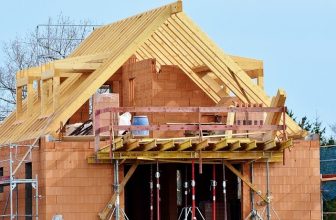 UK housebuilding activity fell at the sharpest rate for three years last month, despite growth improving across the wider construction industry.
UK housebuilding activity fell at the sharpest rate for three years last month, despite growth improving across the wider construction industry.
According to the latest PMI data by S&P and CIPS, the headline construction PMI rose slightly to 51.6, up from 51.1 in April. The increase comes despite housing activity falling for the third consecutive month to 42.7, reflecting the weakening demand in the housing market.
Any score below 50 is considered a decline, whereas anything above is seen as growth.
The data shows an increase in civil engineering, commercial activity and new orders to 53.9, 54.2 and 55.4, as main infrastructure projects continue to be awarded, strengthening the pipeline of work in the sector. In addition, new orders saw the strongest rise since April 2022, and civil rose to an 11-month high in May.
Kelly Boorman, partner and national head of construction at RSM UK, said: ‘The continued fall in housebuilding for May does not come as a surprise, and although only slight, highlights the weakening demand for housing as people are still cautious given interest rates and the cost-of-living crisis.
“The UK’s housing market is showing signs of distress as net mortgage lending contracted by £1.4bn in April, the lowest level on record excluding the pandemic. But, with mortgage rates set to jump even higher, coupled with house prices falling at the fastest rate since July 2009, there are further headwinds for the housing market, with housebuilders pulling back on projects to protect their margins.”
Thomas Pugh, economist at RSM UK, added: “Further falls in house prices seem likely given mortgage rates are rising again and mortgage approvals, which are a leading indicator of demand in the housing market, fell again in April. But we’re not expecting a large slump in prices for three key reasons.
“First, to some degree higher interest rates will be partially offset by an easing in the cost-of-living crisis as inflation falls back rapidly over the rest of this year. That will allow households’ real incomes to start growing again.
“Second, the labour market is likely to stay tight and, even though the unemployment rate will probably rise over the rest of this year, it won’t surge. This means that there won’t be a wave of forced selling, which is normally required to generate a large fall in prices.
“Third, as evidenced by the drop in the housebuilding component of the construction PMI, the supply of new housing is constrained. Given the chronic shortage of homes in the UK this structural imbalance is unlikely to allow large falls in prices.
“So, we see some further falls in prices, driven by a lack of demand rather than forced selling. Falls of around 5-10% from their peaks seem reasonable. This is unlikely to have any significant repercussions for the wider economy given the surge in prices in the previous few years.”


Comments are closed.